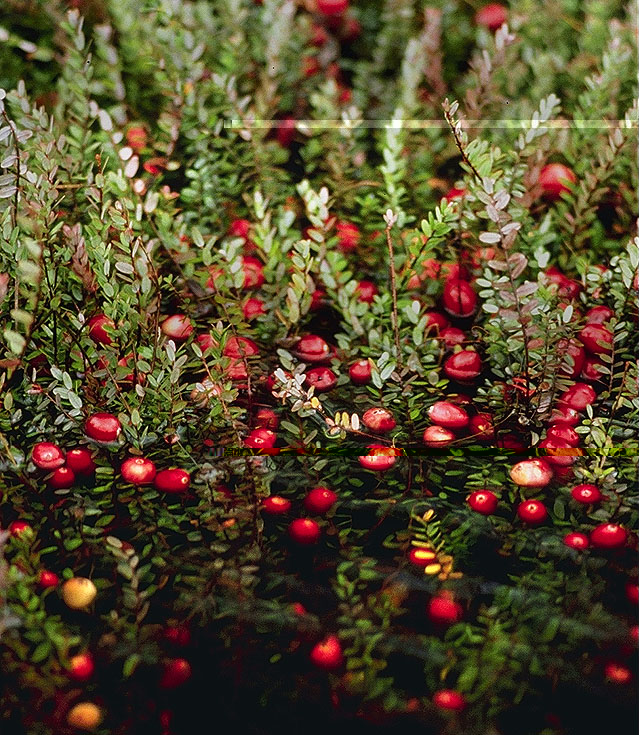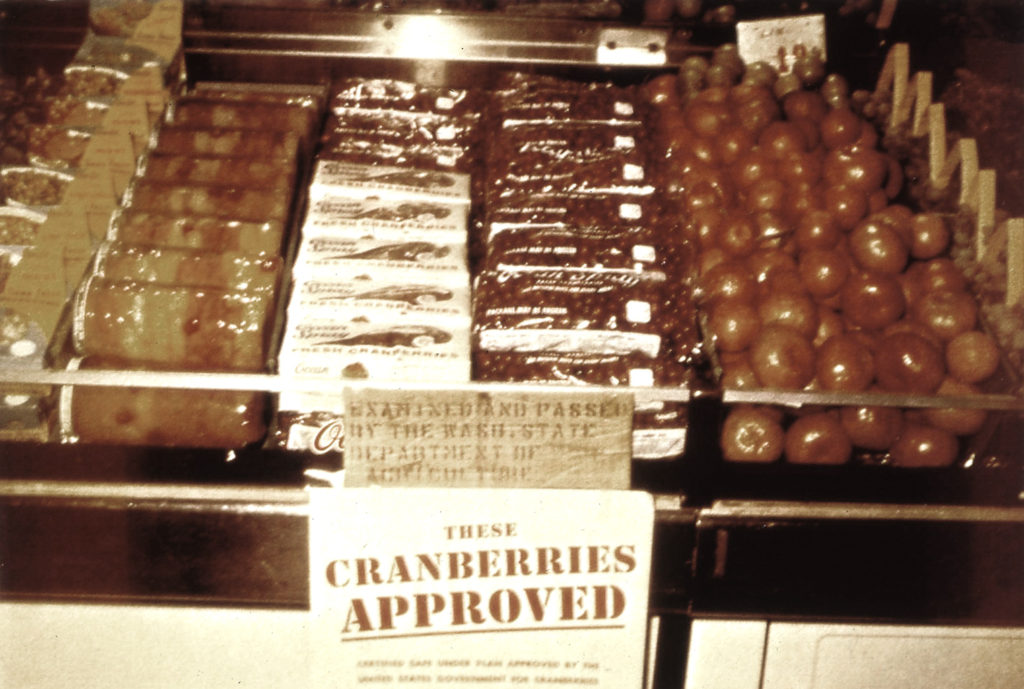Well, it’s almost Thanksgiving, so why not a day about that most American of fruits, the cranberry? According to all the nonsensical “national day” calendars on the Internet, November 23 is that day. I can’t find anyone who claims to have started eat-a-cranberry day or any history about it, so let’s just give the day to cranberries without any official endorsement.

And cranberries deserve a day. The cranberry is one special little fruit, full of all the good things nutritionists tell us to seek in our food. It is also all-American, endemic to the U.S. According to the Cranberry Marketing Association, about 1100 family farms grow cranberries, with Wisconsin and Massachusetts in first and second place for most grown. Cranberry farms go back generations, partially, I suppose, because the type of cultivation—old vines growing in reclaimed bogs and marshes—provides large barriers to entry into the business.
And cranberries deserve a day around this time of year, because, as we all know, the special dinners in this season aren’t complete without cranberries. Cranberry sauce, cranberry bread, cranberries in the salad, cranberry punch, cranberry-scented candles.
What most don’t know, however, is that one of the first “recalls” of food for pesticide contamination involved cranberries–the “Great Cranberry Scare of 1959.” A perfect cranberry storm left the nation with empty bowls where the cranberry sauce should have been.

The first part of the perfect storm came in the mid-1950s, when cranberry growers began to use a new chemical, aminotriazole, to control weeds in their cranberry bogs. FDA approval of the herbicide required that it be applied only after the fall cranberry harvest so that none of the chemical, a known carcinogen, would contaminate the berries themselves. Part two was a change to federal food-safety legislation in 1958 (the Delaney Clause) that prohibited sale of foods containing cancer-causing substances (there were only a few known at the time). Part three was a series of tests of that showed aminotriazole contamination in some lots of cranberries from Washington and Oregon, in November. Secretary of the (then) Department of Health, Education and Welfare, Arthur Fleming, felt he had no choice but to warn the public not to eat cranberries.
The storm grew to hurricane proportions just before Thanksgiving. Sales of fresh cranberries dropped 63% from the previous year. Sales of canned cranberries dropped 79%. Almost half of people interviewed said they would never eat cranberries again. The $50-million cranberry industry, which had been anticipating a great year after a bumper crop, went into a tailspin, losing most of their revenue for 1959. Arthur Fleming was persona-non-cranberry across the country. In Modesto, California, Miss Cranberry burned Fleming in effigy! Mamie Eisenhower struck cranberries from the White House thanksgiving menu—as did most other Americans (on the campaign trail, however, presidential candidate Richard Nixon ate several helps of contaminated cranberries to prove, well, something).

Many believe that the government went overboard that fateful Thanksgiving. Quickly after the uproar, large batches of cranberries that had tested clean were released, a $10 million fund was created to compensate cranberry farmers, and the food-safety regulations began an evolution towards more sophisticated nuance.
But the cranberry was out of the bog, so to speak. Since then, governments around the world have become more conscientious about food safety, with recalls of contaminated foods an almost weekly occurrence And whether we consider that a good thing, protecting our health, or a bad thing, creating health scares over nothing, we owe it all to the humble fruit that graces our dinner tables beginning every November and disappearing again in January—the cranberry!
References:
Cranberry Marketing Association. About US Cranberries. Available at: https://www.uscranberries.com/. Accessed November 17, 2019.
O’Donnell, Edward T. The Great Cranberry Scare of 1959. InThePastLane, November 21, 2012. Available at: http://inthepastlane.com/the-great-cranberry-scare-of-1959/. Accessed November 17, 2019.
Tortorello, Michael. 2015. The Great Cranberry Scare of 1959. The New Yorker, November 24, 2015. Available at: https://www.newyorker.com/tech/annals-of-technology/the-great-cranberry-scare. Accessed November 17, 2019.
